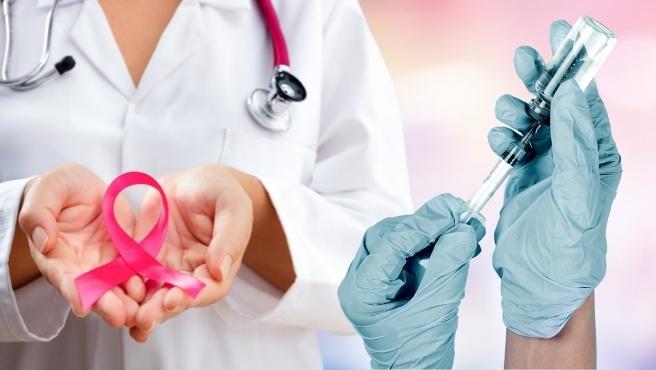Breast cancer is one of the most common, estimated to make up about a third of all cancers in women. Fortunately, there are many researchers who are dedicated to investigating many aspects of this disease in order to find better ways to cure it and, perhaps, some way to prevent it.
This is the goal of a possible vaccine developed by scientists at Cleveland Clinic’s Lerner Research Institute, details of which are detailed in an article published on ClinicalTrials.gov .
Specifically, with this serum, which is beginning its first phase of human trials, they intend to prevent the development of triple-negative breast cancer (TNBC for its acronym in English), since currently the only prophylactic option for people who run a High risk of developing it is mastectomy (surgical removal of the breast). Ideally, the vaccine would also improve the outlook for people who have already survived this type of cancer in the past.
Design of the clinical trial
The trial, which seeks to confirm the adequate doses of the vaccine , will be carried out on a cohort of between 18 and 24 patients who have received treatment for the early stages of this form of cancer in the previous three years; in all cases, they must have been declared tumor-free but have a high risk of recurrence.
These people will receive the serum in three doses separated by two weeks between each dose, and will be closely monitored in order to find any possible side effects or immune responses to the vaccine.
If the study, which will be considered complete in September 2022, shows that this dose of the vaccine is safe and effective , the number of participants with people in good health will expand.
The mechanism of the vaccine
Although we normally associate vaccines with viral diseases (because these are the first against which they were developed and because they constitute the majority of the diseases against which we routinely vaccinate), there are actually vaccines against other types of pathogens and, although so far none have been successfully created, the idea of a cancer vaccine is not new.
After all, a vaccine is not something other than a preparation that stimulates the immune system to activate, fight and record a specific disease.
This is the principle behind this serum, only that instead of using a dead, modified or weakened microorganism (or its DNA or RNA) it prepares the body to react against a protein , α-lactalbumin. It is a substance that the body produces, under normal circumstances, only during the last stages of pregnancy and during lactation; but that, nevertheless, appears overexpressed in emerging tumors.
Before reaching human trials, the serum has been tested in female mice and other animal models; In all cases, it was shown that it was able to inhibit the appearance of mammary tumors and that it did not cause autoimmune inflammation, which makes its use safe.
In addition, the vaccine even managed to stop the growth of existing tumors in those same animal models in which it was tested.
A long way
However, do not rush. This is a phase one trial, which means that its main objective is to determine the safety of the vaccine and its appropriate dose. Efficacy , on the other hand, should be evaluated in phase two and phase three trials. This means that even when all is well, the vaccine may not be available for general use for several years.
In addition, researchers must be especially cautious, since both the target and the agent of the vaccine have not been tested in humans before. Therefore, there is still some uncertainty about the possible occurrence of side effects , despite the good results obtained on animal models.
On the other hand, due to the specificity of the mechanism of action, the profile of the patients must also vary ; The serum may not behave in the same way in women experiencing menstruation, for example, as it does in women who are breastfeeding.
Be that as it may, the creators of the vaccine remember that all the drugs that we use today with confidence and safety were one day in phase one of human trials, so although prudence and patience will still be needed, this experiment opens up hopeful horizons .

